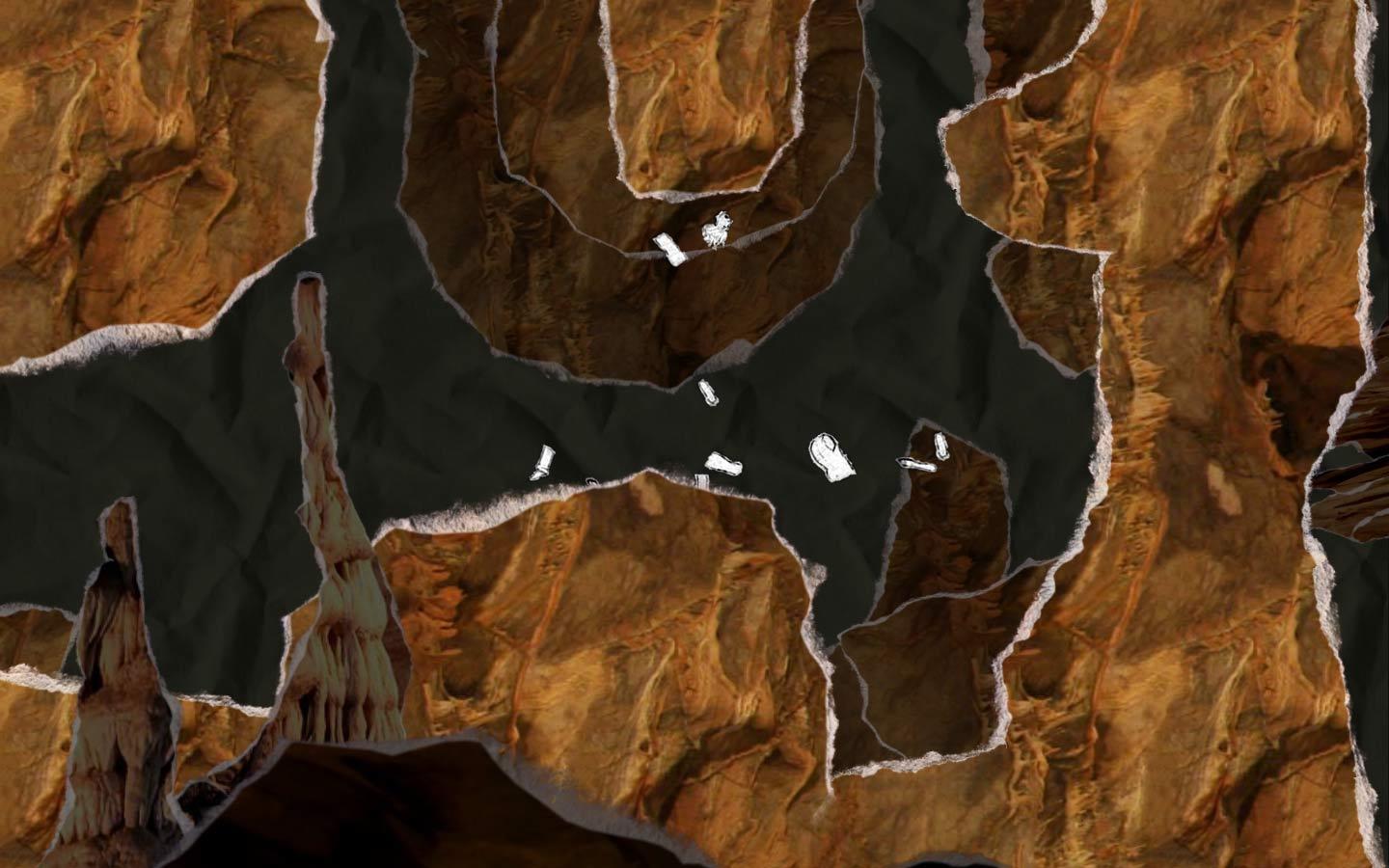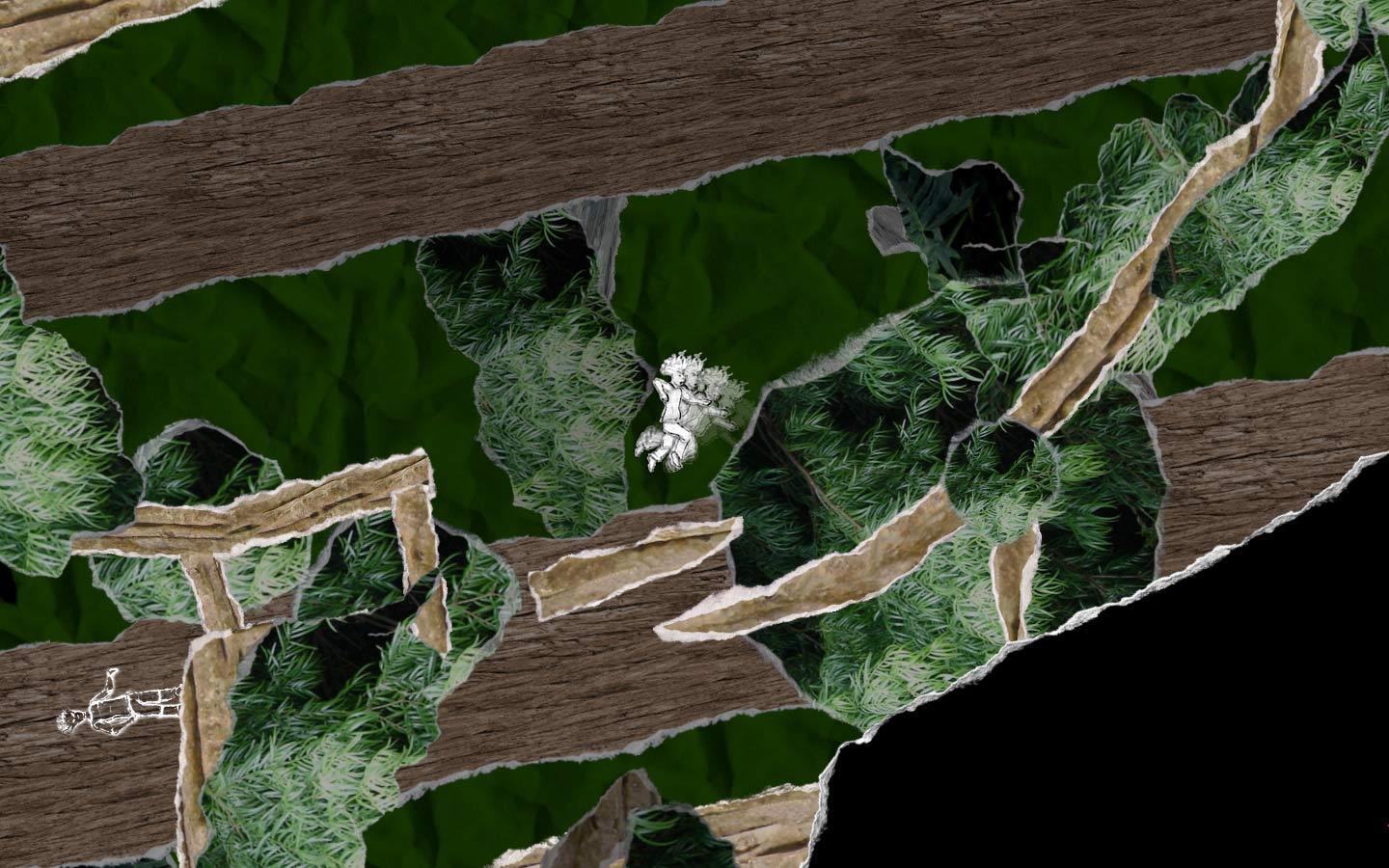And while I overall really enjoyed my time with it, there was one issue that really bugged me. Whenever the player lands on the ground a bit too fast, he instantly dies from falling damage.
Now, in other games, players learn to approximate how far they can fall pretty quickly, and can from there on avoid getting themselves killed by it. Unfortunately, it's not all that simple in AYIM.
 |
| This is what death by falling looks like. I got to see it quite a lot. |
This was made even worse by how the world rotation is implemented. See, you can only rotate the world in 90°-turns (at least in the PC-version). And while the world is rotating (which takes about 1/4 of a second) your movement is effectively stopped. Once the rotation is done, you get back all your momentum from before, but in a completely different spatial context. As a result, I oftentimes completely lost the sense for my own speed and didn't even expect do get killed by a fall right up until I hit the ground.
To make things even more confusing, whether or not an impact kills you, also depends on the angle in which you hit a surface.
 |
| While rotating, time stands still. Not helpful, if you want to keep your sense of momentum. |
First of all, let's consider concept. AYIM is a game, in which a player that can rotate the world around him at will. With only that overall concept in mind, if I were asked what could the main challenge for the player, avoiding falling damage would probably be among my first answers. The rotating mechanic itself being the greatest help as well as the greatest danger to the player, is a genuinely appealing idea to me. Also, if you could just turn the world around at will in real life, your greatest foe would probably be gravity (and maybe motion sickness); it just makes sense.
So I do think, that in this case falling damage is a very elegant and intuitive concept. The question is, however, if the overarching concept is more important than the gameplay. This is, I think, very much a question of personal taste, and of the creators intent, and I won't criticise one or the other at this point. Instead, I will continue talking about this particular mechanic from a purely gameplay-focused perspective.
Secondly, let's consider flow. Falling damage, as implemented in AYIM, very much emphasises a methodical approach to traversing space. To succeed, many jumps have to be carefully planned before execution. Which, together with the environmental puzzle elements (which make up the other half of the game) and the rather obtrusive visuals, set an rather slow overall pace throughout the game. Which I generally do not at all dislike.
The problem, in my eyes, is that the rotation mechanic itself tends to invite a very different pace. I personally enjoyed those passages the most, where I could use the world rotation to just intuitively and efficiently traverse a part of the level, without having to stop and think about my next move. Sadly, those moments were rather sparsely spread throughout the game, mostly being hindered by my fear of falling to my death with every false step.
The game itself even seems to recognise this appeal of a faster paced gameplay in some way, encouraging speed runs and time trials as optional challenges (which, of course, most of the time don't actually work all that well with the mechanics).
Lastly, let's consider level design. This is probably one of the most common reasons (besides "realism", which I may talk about some other time), falling damage is implemented in games. It is an easy solution to a lot of problems. If your level is ascending, you don't want your player to fall all the way back down and have to start all over again. Rather kill them and have them restart at the last checkpoint. If your level is descending, you don't want the player to just jump all the way down and miss all the carefully placed obstacles you left for him. This is especially true for AYIM, where there are no predefined ascending or descending passages, but you can basically just fall in every direction.
Now, I did think about how to solve this problem for quite a while and thought of some possible approaches, but this post is already becoming quite long, so I'm not going to go into any detail on that. In summary, all of my ideas that included fundamentally changing or removing falling damage had some flaw or the other. The only thing that I think would definitely improve the game, would be some changes to the implementation.
- The player needs an indicator of his movement speed that is independent from spatial awareness. Because, as mentioned, your spatial awareness gets disturbed every time you rotate. I would probably propose auditory feedback, maybe the wind rushing by louder, the faster you are.
- Maybe not stop time while rotating? I'm saying 'maybe' because I think changing this could have unwanted side effects like even more disorientation. Can't say for sure without playtesting.
- Move the death threshold a tiny bit up. Let the player fall that extra half a character height without killing him. Make him not fear for his life whenever he takes a step. I think only a minor change here might make the overall experience much less frustrating.
In conclusion:
I loved And Yet It Moves. I recommend it to anyone who is even a bit interested in puzzle games, extraordinary art styles, or level design.
I also loved the concept of falling damage in AYIM. However, I disliked its implementation and think it could have been done better with only some minor tweaks.
PS:
This was originally going to be a post mainly about falling damage as a general game mechanic, with AYIM only serving as a starting point. I guess I got a bit caught up in the matter. Maybe I'll do the general thing some other time.
No comments:
Post a Comment